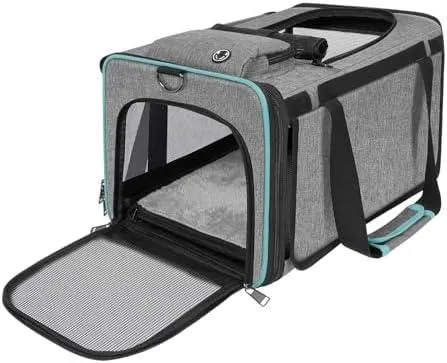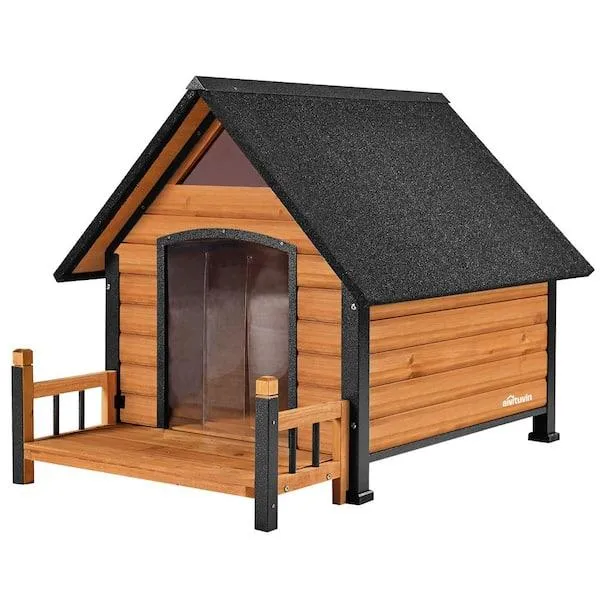Flying with Your Dog: Everything You Need to Know
Whether you’re going on a family vacation or moving to a new home, taking your furry friend along in the cabin of the plane is often preferable to arranging for pet shipping or boarding. However, certain regulations and considerations apply when transporting dogs on commercial flights. In this comprehensive guide, I’ll answer all the most common questions pet owners have about flying with dogs domestically in the U.S.
What paperwork is required?
Most airlines require documentation showing that your dog is healthy and up-to-date on vaccinations. At a minimum, you’ll need a certificate from your vet stating that your dog received rabies vaccination at least 30 days before the flight and that the vaccination is current. Many airlines also request a health certificate issued within 10 days of travel. Be sure to check documentation requirements for your specific airline well in advance of your travel date.
How do I properly crate train my dog?
Dogs must remain in an FAA-approved travel kennel that fits under the airplane seat in front of you for the duration of the flight. From my experience helping clients crate train nervous dogs, starting slow and focusing on positive reinforcement is key. Use treats and praise to teach your dog that their crate is a happy, safe space. Practice short crate sessions every day and gradually increase time inside before letting them out again.
- Start in a low-stress room with the crate door open and encourage them to go inside to receive a treat.
- Work up to closing the door for just seconds at a time with you nearby.
- Progress to leaving the room for a few minutes while they’re crated.
The more comfortable your dog is spending time in their crate beforehand, the less anxiety they’ll experience on the plane.
What are airline size and weight restrictions?
Most airlines only allow small dogs to fly in the cabin—typically under 20 pounds. Some will accept slightly larger dogs on a case-by-case basis if the kennel fits under the seat. Always check your specific airline’s rules, as weight and size limits do vary. Oversized dogs must be transported in the cargo hold as manifested cargo instead of the cabin.
How early should I arrive at the airport?
Plan to show up at least 2 hours before your scheduled departure time when flying with pets. The check-in process takes longer due to paperwork compliance verification. You’ll also want some buffer in case of airport traffic or other unpredictable delays. It’s kind of a drag but better safe than missing your flight with Fido!

What items can I bring for my dog on the plane?
In addition to the travel kennel, the essentials are:
- Leash and collar
- Food and water bowls (spill-proof for in-cabin use)
- A few favorite toys
- Pee pads (especially for long flights)
- Medications or supplements if needed during travel
Other amenities like blankets, sweaters, or calming supplements might provide comfort too. But limit what goes in the aircraft cabin for your dog’s well-being and to comply with size/weight limits of the kennel.
Are there any breeds that have restrictions?
Some dog breeds are outright banned from the passenger cabin on safety grounds due to their size or innate traits. The most common restricted breeds are pit bulls, rottweilers, akitas, chows, and their crossbreeds. Always double check a dog’s breed with the airline directly if there is any possibility it contains a banned type. The earlier you know, the more options you have like sedating or cargo transport instead.
What if my dog acts nervously?
Even well-traveled pooches can feel anxious in new situations like flying. From my experience as a vet, a few things help ease nerves: Take a test-run to the airport without flying so they get used to the sounds, give calming supplements 1-2 hours before departure , or talk to your vet about short-term anti-anxiety medication for trips. Once on board, it may reassure them to see you or have a comforting toy or treat in their kennel.
If all else fails, and they totally lose it, the flight crew has the right to deny a visibly distressed animal from remaining in the cabin. Then you’d have to check the kennel as cargo instead. So it’s best to be prepared!
Are there any seasons I should avoid?
Weather extremes can be taxing on dogs. The summer heat poses dehydration risk if stranded on a hot tarmac. Winter blizzards may cause delays or cancellations too. Flying during traditional vacation months of June-August and December-January tends to come with higher animal travel volumes as well. If your dog’s comfort is the priority, you basically want to sort of aim for “shoulder season” flights when it’s not too hot or cold outdoors.

Can I sit with my dog on my lap?
Only small dogs under 20 pounds are allowed to remain on an owner’s lap in-flight instead of being crated under the seat. And not all airlines permit even tiny pups due to liability or safety policies. So again, confirm the rules with your carrier ahead of booking travel. Personally, I think it’s kindest to keep dogs securley crated unless absolutely necessary for medical reasons.
What happens if my dog needs to relieve itself?
Thankfully, most domestic flights are short enough that well-exercised dogs can easily hold it. However, it never hurts to come armed with pee pads and plastic bags just in case. Let a flight attendant know if an accident occurs so they can assist with cleanup. Otherwise, try to take your pup out for a potty break within 2 hours of boarding to be safe.
How can I prepare my dog mentally for flight?
Beyond crate training and addressing any fears with behavioral work, incorporate flying simulations into your daily routine a week beforehand. For example, take them on practice trips to the airport without the actual flight portion. Play recorded ambient airplane noises during car rides or at home too. The more they get used to associated sights, sounds and locations leading up to departure day, the less they’ll freak out when things get real. Positive reinforcement makes a world of difference at each stage!
In summary, with a little planning dog parents can feel confident about transporting well-behaved canine companions on commercial planes. Just be sure to thoroughly research each airline’s specific rules, prepare your pup adequately through training and practice runs, and don’t forget any vital documents or supplies. Safe travels to all flyers both two-legged and four—bon voyage!
Dog Fly Guide
| Airline | Requirements | Cabin | Cost |
|---|---|---|---|
| Delta | Under 20 lbs, in carrier/kennel | Cabin | $125 each way |
| United | Under 20 lbs, in carrier/kennel | Cabin | $125 each way |
| American | Under 20 lbs, in carrier/kennel | Cabin | $125 each way |
| Alaska | Under 20 lbs, in carrier/kennel | Cabin | $125 each way |
| JetBlue | Under 20 lbs, in carrier/kennel | Cabin | $99 each way |
FAQ
-
Can I bring my dog into the cabin on the airplane?
Most airlines in the United States don’t allow dogs or other pets in the main cabin. They gotta be in cargo. However, there are some exceptions for service animals if the animal is trained to aid a passenger with disabilities.
-
Is it safe to transport a dog in the cargo hold?
While air travel is generally safe for pets according to experts, basically there are some risks to consider. Animals down below don’t have an pressurized or temperature-controlled environment like us in the cabin. Some problems could arise from this, but many dogs complete flights with no issues. It depends on the individual pet.

-
What size dog can fly as cabin baggage?
The maximum size allowed by airlines for cabin pets is usually quite small. Most say the pet must fit comfortably inside an approved carrier that can go under the seat in front of you. Often that means something the size of a small dog or cat. But the rules vary by carrier, so check the exact specs for yours. Size ain’t everything here.
-
How much does it cost to fly a dog as cargo?
The cost to fly your dog as cargo depends on the airline and the animal’s size. It can range from about $100 to $300 or greater each way. Additional fees may apply for overweight dogs. Of course, it’s more affordable if Fido is small and light. But is it worth it to save a few bucks if bigger dogs don’t tolerate travel well? You gotta decide.
-
What documents are required for a dog on a plane?
To fly with your dog, you’ll basically need his veterinary records showing he’s healthy and had the proper shots. The airline will want proof of that from the vet. You also gotta have the dog secured in a FAA-approved carrier or crate. And don’t forget a leash, just in case he needs to be restrained during the trip. Documents are important to keep everyone safe at high altitudes.
Is it stressful for dogs to fly?
Airplane travel can undoubtedly be stressful and disorienting for many dogs. Between the unfamiliar surroundings, sounds, and movements of taking off and landing, it’s kind of terrifying for animals depending on their personality. There’s also a chance of injury if something shifts during turbulence. Still, others seem to take it in stride if properly exercised, trained and acclimated to car/crate travel beforehand. Ask your vet for tips to make things easier on your pup.
What are some tips for reducing stress on dogs during air travel?
Experts suggest several approaches that may help lessen anxiety for flying dogs. You can try medication or calming supplements from the vet. Use a comfortable carrier that’s big enough for exercise before travel. Consider sedatives or calming treats if prescribed by your vet. Get your dog accustomed to car and crate rides well before the trip. Bring favorite toys or bedding. Some owners swear by calming pheromone diffusers too. With patience and training, flying can be less horrifying for dogs perhaps.
Despite the obvious risks cargo travel may pose compared to flying in the cabin, most experts agree it is still quite possibly safer than driving for medium to long trips if health protocols are rigorously followed. Nevertheless, every owner must consider their dog’s personality and health issues to determine the best option. While it seems kinder to keep dogs close by up front, safety has to come before comfort!

